Localising the Rohingya refugee response

For decades now, Rohingya refugees have been crossing the border into Bangladesh as unrest worsened in their native Rakhine, Myanmar. Following a smaller refugee influx in 2016, over 700,000 refugees subsequently fled across the border in August 2017, at a speed and scale surpassing greatly previous influxes.
“Host communities were the first responders,” says Abu Morshed Chowdhury, chief executive of PHALS, an NGO in Cox's Bazar. Earlier settled refugees, the first of whom arrived in 1978, and locals took in Rohingya families or at the very least allowed them to squat on their lands and provided them with food. So too, did local authorities and civil society organisations which had been witnessing the incoming refugees for decades.
A December 2017 report by the international Humanitarian Advisory Group and the national organisation Nirapad, “When the rubber hits the road: Local leadership in the first 100 days of the Rohingya crisis response”, notes that the humanitarian response in Bangladesh was earlier local-led but as the crisis grew and international funding increased, UN agencies and INGOs took over especially in leadership roles.
Earlier, INGOs faced restrictions in operating in the two official refugee camps and the numerous other makeshift settlements in Cox's Bazar, needing to partner with local organisations in order to work with the refugees. The International Organisation of Migration (IOM), together with the government, was designated to lead the refugee response.
However, soon after the 2017 influx, the report notes “decision-making and leadership of relief operations shifted from local NGOs and communities to key UN bodies and a few international organisations.” As early as three months into the response, local organisations' roles were narrowed down to implementation and played no part in leadership and decision-making.
“When international bodies partnered up with local organisations, it was not really an equal partnership but contractual. We were only to distribute [aid] but we were not involved in the decision-making and our work largely unacknowledged in aid reports,” says Morshed.
Currently, the majority of funding (69 percent) goes to UN agencies, followed by INGOs (20 percent) and the Red Cross (7 percent) and national organisations receive only four percent.
How much of aid is spent on transactional costs?
The Cox's Bazar CSO-NGO Forum (CCNF), a platform of local NGOs and civil society organisations, recently brought out a study on localisation of aid and transparency. Presented in a press conference in Dhaka on February 12, the study also outlined a cost breakdown of an INGO operating in the camps.
“We estimated the costs based on our knowledge of local operational costs and how many expatriates were working in the organisation,” says Rezaul Karim Chowdhury, co-chair of CCNF and executive director of COAST Trust. The INGO, according to the study estimates, spent only 18 percent of their funds on their programmes for the refugees while the rest 82 percent was spent on operation costs.
Cox's Bazar has seen a revolving door of expatriate workers, usually hired on short-term contracts, flying in to work in the camps. From their homes and hotels, the aid agencies's four-wheel drives barrel 40 kilometres south from Cox's Bazar to Ukhia every day.
According to the Inter-Sector Coordination Group (ISCG), which coordinates the work of all the humanitarian agencies, however, more than 70 percent of the 1,200 UN staff in Cox's Bazar are Bangladeshis. There are currently 443 expatriate workers employed by NGOs, filling just 2.5 percent of total positions, and the majority of staff (66 percent) are Cox's Bazar locals according to a recent survey by the Bangladesh Rohingya Response NGO Platform, a forum of local, national and international NGOs.
The 2017 localisation report also states that when international actors tend to dominate the response, “problems persisted with short term-deployments, weak handovers, and diversion of local actor time and resources to bring new international staff up to speed on context at each rotation.”
“Their [UN agencies and INGOs] operational costs are very high,” says Karim, emphasising the expense of around 600 aid agencies' vehicles that locals see clog the narrow roads of Ukhia every day. The study also notes that local children can no longer walk to school due to the heavy traffic.
Based on the 2018 Joint Response Plan (JRP), which called for USD 950 million in total aid for the refugees, the CCNF study estimates that every Rohingya family could have been allocated aid worth USD 351 per month. This number, to be sure, is based on a rather simplistic calculation dividing the total aid received up to late last year by the number of refugee families.
Total aid, of course, include overhead and management costs and among other allocations, funding for host communities. “But this is the problem. They are not transparent at all. They do not reveal how much funding is being allocated for the refugees and the host communities,” says Karim.
CCNF's study also interviewed local and international NGOs and UN agencies about working practices in Cox's Bazar. One concern highlighted by local NGOs was that INGOs and UN agencies poached their staff; according to Karim, 25 percent of COAST Trust's staff have been hired by UN agencies and INGOs (which are able to pay higher salaries).
Launched in mid-February, the 2019 JRP appeal is for USD 920 million in aid for the refugees in addition to over 330,000 members of the host communities.
The appeal outlines the needs, priorities and what funds will be used for in each sector, says Nayana Bose, spokesperson for the ISCG. “More than half the appeal (57 percent) is for food security, water, sanitation and hygiene (WASH), shelter and non-food items (NFI) sectors. Food assistance alone is 28 percent of the overall appeal. This is basic life-saving humanitarian support for a vulnerable population fully dependent on humanitarian aid until conditions become conducive for their voluntary return.”
The case for localisation
Calls for localisation of aid efforts and aid transparency are not just demands of local organisations. These are requirements donors and aid organisations pledged to fulfill. The Grand Bargain, signed at the World Humanitarian Summit in 2016, calls for a commitment that 25 percent of funding be allocated to local and national actors working in humanitarian settings and to reduce transactional costs, by 2020. Greater transparency is the primary goal of the agreement.
Another global agreement is the Charter for Change, which calls for promoting and acknowledging the role of local actors. “If they [UN agencies and INGOs] pledged to fulfill these agreements, why don't they follow it in Bangladesh?” asks Karim.
The “whole-of-society” approach is called for in the global compact on refugees where in addition to the state and international aid organisations, non-traditional development stakeholders such as the private sector and even financial institutions are involved in the humanitarian response.
“If local communities and civil society are not consulted, this will not be a sustainable approach. That is why we are demanding the whole-of-society approach in Cox's Bazar,” says Morshed.
The 2019 JRP say agencies will develop a “roadmap to localisation” in partnership with local and national organisations and civil society. “There is commitment to strengthen national capacities at all levels, including to support leadership and coordination by the Government,” says Jon Hoisaeter, senior coordinator for the Rohingya refugee response.
Local organisations are thought of as not having sufficient capacity to handle a humanitarian situation of this scale, hence the international 'responders' dominating the leadership. But, points out Karim, local organisations' staff have been poached by large NGOs and UN agencies operating in the camps. “If they take our staff and say that we don't have the capacity to deal with the humanitarian situation, isn't that contradictory?”
“The idea is for international NGOs and UN agencies to help expand the capacity of local NGOs, so that they can gradually take over the response in the future when international actors' presence will diminish,” said Dominika Arsenuik, NGO platform coordinator of the Bangladesh Rohingya Response.
Karim agrees, suggesting that the INGOs and UN agencies contribute to aid efforts by ensuring monitoring and capacity development. “But the work should be done by civil society, NGOs and local government. This way, operation costs would be reduced significantly.” Karim notes, for example, that the Grand Bargain calls for aid organisations to use a common logistical pool in areas such as transport.
Another issue is local context. “The most important thing now is security and conflict sensitivity,” says Karim. He argues that Cox's Bazar-specific issues such as religious fundamentalism in the area, fighting between host communities and the refugees are best handled by local organisations and government.
Local organisations are also worried about international aid once the next big international humanitarian crisis occurs. “Aid is declining by the day. So, we are urging that operation costs at the field level be minimised. Because the money is supposed to go to the Rohingya refugees and the host communities,” says Morshed. “Ultimately the responsibility [of the refugees] will fall on our shoulders, those who are the host community, when the aid dries up.”
“Some progress has been made, but longer-term efforts are required by all stakeholders, in line with the recommendation that international and local actors working with government officials should develop a three-year timeline of transition towards greater responsibility by local actors in managing and delivering the response,” says Bose of ISCG.

 For all latest news, follow The Daily Star's Google News channel.
For all latest news, follow The Daily Star's Google News channel. 

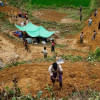

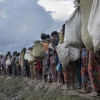
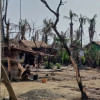
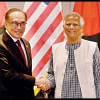

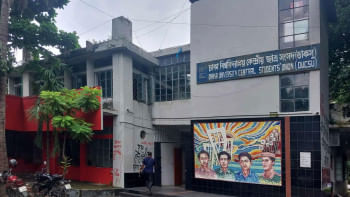
Comments